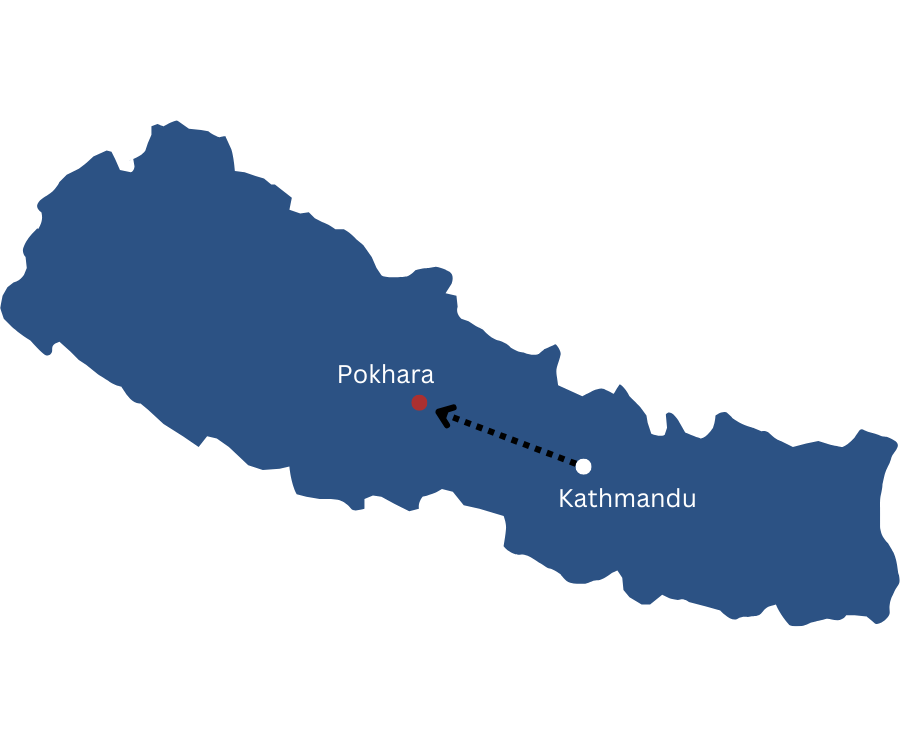Tragedy strikes Nepal
This map of Nepal shows the route of the plane. It was a short flight, lasting only 24 minutes. 9N-ANC crashed 1.6 kilometers from the Pokhara Airport.
February 6, 2023
On Jan. 14, a domestic Yeti Airlines plane named 9N-ANC crashed in Nepal, killing all 72 people on board. The plane was an ATR 72 model and it crashed into a gorge only meters away from residential homes, 1.6 kilometers from the runway at the Pokhara Airport.
The plane’s black box which recorded the last data readings before the plane’s crash has been recovered and is in good condition. The cause of the crash is still unknown as of now.
Due to Nepal being home to some of the tallest mountains in the world, it is known for cheap airfares. Many people in Nepal travel across cities by plane instead of having to navigate the steep terrain.
The most recent crash is one of 33 crashes that have taken place in Nepal since 2000, 21 of those being fatal.
One of the victims of the recent crash, Co-pilot Anju Khatiwada, lost her husband to another one of Yeti Airlines’ fatal crashes. She was an experienced pilot, flying over 6,400 hours for Yeti Airlines, captain and was notably one of only six women employed by Yeti Airlines as a pilot.
Sixteen years ago, her husband Dipak Pokhrel had been co-piloting a cargo plane for Yeti Airlines when it crashed and burst into flames.
As a result of this tragedy, now both a widowed mother and a nurse, Khatiwada decided to pursue training to be a pilot in the U.S. She then returned to Nepal and was hired as a pilot for Yeti Airlines. Khatiwada wished to continue her husband’s dream as a pilot.
These recurring tragedies have shone a light on Yeti Airlines’ aircraft safety.
Rough terrain and quick changing weather have been cited as reasons for Nepal’s very long crash history. Many people have pointed out Yeti Airlines’ shortcomings such as aging aircrafts and negligent regulation.
Although the cause of the sudden crash is still unknown, there is speculation.
Navy Commander John Hiltz, a U.S. Navy pilot says that there are multiple reasons as to why the aircraft could have crashed.
“One, there could have been a flight control failure, meaning that if the aircraft has cables that attach to the flight controls and one of those cables were to fail, that would clearly cause the plane to depart controlled flight in a very rapid way,” Hiltz said.
Hiltz said another reason may have to do with the plane’s age and transponder. Before the crash, the plane’s transponder sent irregular and inaccurate data on its altitude and speed before halting all position data from release. The data stopped seven minutes before the plane’s final data was received.
Hiltz explained that the transmission’s altitude data may have to do with another instrument in the plane that stopped working.
“That information is derived from other instruments in the airplane. The altimeter would tend to provide that information, so if there’s something wrong with the altimeter, then that information could be spurious or incorrect,” Hiltz said.
The unpredictability of 9N-ANC’s performance and Yeti Airlines’ aging aircraft may have contributed to 72 people’s death.







